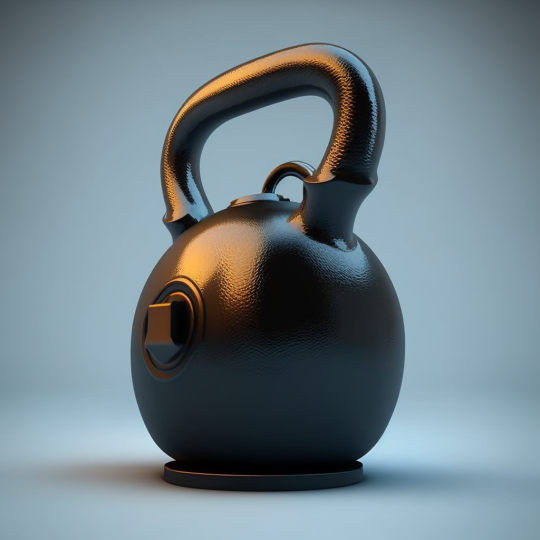Measurement and Temperature
This lesson covers the general history of measurement systems, the differences in those systems, and details on how to tell the temperature in Celsius and Fahrenheit.
- Understand the history of measurement
- Tell temperature in Fahrenheit and Celsius
- Estimate conversion between the two systems
- Honors understands windchill and kelvin
Measuring Length
The basics of measuring length. This lesson includes imperial and metric values for measuring distance.
- Understand Imperial and Metric Length Units
- Know divisions of units
- Convert from one system to another
- Use measurements to solve problems
Mass, Weight, and Volume
The mass, weight, and volume lesson explores the basic differences and how to measure properties in metric, as well as imperial, units.
- Understand the different between mass, volume, and weight
- Know the units of volume and conversions
- Know weight units and conversions.
The History of Measurement and Temperature
The Imperial Measuring System
The Imperial measurement system is a system of units that was used in the British Empire and its territories, including the United Kingdom, from the late 17th century until the late 20th century. The system was created as a way to standardize measurement and improve trade and commerce throughout the empire.
The origins of the Imperial system can be traced back to the late 17th century when the government of England commissioned a committee of experts to create a standardized system of weights and measures. The committee recommended a system that was based on the length of the human foot, which was divided into 12 inches, and the pound, which was divided into 16 ounces. This system was officially adopted as the standard system of weights and measures in England in 1824.
The Imperial system was then exported to other parts of the British Empire, including the United States, where it was used as the standard system of weights and measures until the late 19th century. The system became widely used throughout the empire and was seen as a symbol of British power and influence.

Despite its widespread use, the Imperial system was criticized for being too complex and for not having enough precision for scientific and industrial use. This led to the creation of the metric system, which was based on a decimal system and was seen as a more logical and accurate system of measurement.
In the late 19th and early 20th centuries, the British Empire began to adopt the metric system as its standard system of measurement. The transition to the metric system was slow and gradual, however, and the Imperial system remained in use in many parts of the empire for many years.
In the United Kingdom, the transition to the metric system was complete by the late 20th century, and the Imperial system was officially replaced as the standard system of measurement. The Imperial system is now used only in a few countries, such as the United States and Liberia, where it remains a part of their cultural heritage and history.
The Metric Measuring System
The metric system, also known as the International System of Units (SI), is a system of units that is used for scientific and industrial purposes throughout the world. The system was created in France in the late 18th century as a way to standardize measurement and improve trade and commerce.
The history of the metric system can be traced back to the French Revolution when the French government commissioned a committee of experts to create a standardized system of weights and measures. The committee recommended a system that was based on a decimal system and was easy to understand and use. This system, which was known as the metric system, was officially adopted as the standard system of weights and measures in France in 1795.
The metric system quickly gained popularity in France and other parts of Europe, and by the mid-19th century, it had become the standard system of weights and measures for scientific and industrial purposes throughout much of Europe. The system was seen as a more logical and accurate system of measurement than the traditional systems that were in use at the time, such as the Imperial system, which was used in the British Empire.
In the late 19th and early 20th centuries, the metric system was adopted by other countries, including the United States, as their standard system of measurement. The transition to the metric system was slow and gradual, however, and many countries continued to use their traditional systems of measurement for many years.
In the mid-20th century, the metric system was officially recognized as the International System of Units (SI) by the International Organization for Standardization (ISO). The ISO is a global organization that sets standards for measurement and other technical fields, and the recognition of the metric system as the International System of Units made it the standard system of measurement for scientific and industrial purposes throughout the world.
Today, the metric system is used by almost all countries for scientific and industrial purposes, and it is widely recognized as the most accurate and logical system of measurement. The system is based on a decimal system, which makes it easy to understand and use, and it has been widely adopted for scientific, industrial, and commercial purposes.
Early Temperature Measuring
Before the invention of the Fahrenheit and Celsius temperature scales, people used a variety of methods to measure temperature. One of the earliest methods was the use of thermal expansion, which involved observing how certain substances changed in size in response to changes in temperature.

For example, early temperature measurements were often made using alcohol-filled thermometers, which used the expansion of alcohol to measure temperature. This method was often inaccurate and inconsistent, however, as the expansion of alcohol varied with changes in pressure and other factors.
Another method used before the Fahrenheit scale was the use of mercury in thermometers. Mercury has a relatively low coefficient of thermal expansion, which made it a useful material for temperature measurement. However, like alcohol-filled thermometers, mercury thermometers were often inaccurate and inconsistent due to variations in pressure and other factors.
In addition to these early methods, the temperature was also measured using various methods based on the properties of air, such as the use of hot-air balloons, which measured the temperature of the air as it expanded and rose into the atmosphere.
Despite these early methods, temperature measurement was often inaccurate and inconsistent, making it difficult to compare temperatures across different locations and times. It was not until the invention of the Fahrenheit temperature scale in the 18th century that temperature measurement became more accurate and consistent, allowing for the comparison of temperatures across different locations and times.
The Invention of Fahrenheit
The Fahrenheit temperature scale was created by a German physicist named Daniel Gabriel Fahrenheit in 1724. Prior to the invention of the Fahrenheit scale, temperature measurement was done using a variety of systems, including the use of mercury in thermometers. However, these methods were often inaccurate and inconsistent, making it difficult to compare temperatures across different locations and times.
Fahrenheit set out to create a more accurate and consistent temperature measurement system that would allow for the comparison of temperatures across different locations and times. He created the Fahrenheit temperature scale by using a mixture of ice, water, and salt to define the lower and upper limits of the scale. He set the freezing point of water as 32°F and the boiling point of water as 212°F.
The Fahrenheit scale was quickly adopted by scientists and engineers in Europe and the United States and became the standard temperature measurement system in the United States until the late 19th century. However, the Fahrenheit scale was criticized for being too complex and for not having enough precision for scientific and industrial use.
In the late 19th century, the Celsius temperature scale was introduced and quickly gained popularity as the standard temperature measurement system for scientific and industrial use. The Celsius scale is based on the metric system and sets the freezing point of water at 0°C and the boiling point of water at 100°C.
Despite the adoption of Celsius, the Fahrenheit scale is still used today in the United States, its territories, Liberia, and the Cayman Islands for everyday temperature measurements. It is considered to be a part of American culture and history, and it is still taught in school along with Celsius. The Fahrenheit scale remains an important part of the history of temperature measurement and continues to be used by millions of people.

The Rise of Celsius
The Celsius temperature scale was created by a Swedish astronomer named Anders Celsius in 1742. Prior to the invention of the Celsius scale, temperature measurement was done using a variety of systems, including the Fahrenheit scale, which had been introduced a few decades earlier. However, the Fahrenheit scale was criticized for being too complex and for not having enough precision for scientific and industrial use.
Celsius set out to create a more accurate and consistent temperature measurement system that would be easier to use for scientific and industrial purposes. He created the Celsius temperature scale by setting the freezing point of water at 0°C and the boiling point of water at 100°C. This simple and intuitive system quickly gained popularity among scientists and engineers, who found it to be more useful for scientific and industrial purposes than the Fahrenheit scale.
The Celsius scale was first adopted in Sweden, where it quickly became the standard temperature measurement system. Over the next few decades, the Celsius scale gained popularity in other parts of Europe and eventually became the standard temperature measurement system for scientific and industrial use throughout the world.
One of the reasons for the widespread adoption of the Celsius scale was its simplicity and ease of use. Unlike the Fahrenheit scale, the Celsius scale was based on the metric system, which made it easier to understand and use for scientific and industrial purposes. In addition, the Celsius scale was more precise than the Fahrenheit scale, making it better suited for scientific and industrial use.
Despite its widespread adoption, the Celsius scale has not completely replaced the Fahrenheit scale. The Fahrenheit scale remains in use in the United States, where it is considered to be a part of American culture and history, and is used for everyday temperature measurements.
Measurement & Temperature Study Guide
Temperature & Measurement History Study Guide
There are 3 areas of questions. Mastery requires 100%. Critical Thinking requires 75% or more. And Honors is optional and may be skipped, but requires 75% or more. All questions are clear and are not trick questions.
Mastery Questions
- Know the general characteristics, differences, and history of Fahrenheit and Celsius.
- Know how to write °F and °C properly and understand the difference.
- Know the freezing and boiling points of water on both scales.
- Estimate the weather based on Fahrenheit or Celsius temperature.
- Know the differences between Metric and Imperial systems of measurement and where they are used in the world.
Critical Thinking Questions
- How to convert Celcius to Fahrenheit.
- How to convert Fahrenheit to Celcius.
- Make temperature estimates based on knowledge of memorized points and understanding of the conversion process.
- Identify the benefits of the metric system.
Honors Questions (Optional)
- Know how to do more difficult conversions of temperatures between the two scales.
- Know how windchill affects temperature.
- Know the temperature of the surface of the sun.
- Know about kelvin.
Kelvin Temperature Scale (Honors)
Kelvin: The International System of Units' Temperature Scale
Temperature is a crucial physical quantity that plays a significant role in our daily lives and a variety of industries. The standard unit of temperature measurement is the kelvin, named after the Scottish mathematician and engineer William Thomson, also known as Lord Kelvin.
 Kelvin is the base unit of temperature in the International System of Units (SI) and is used to express the thermodynamic temperature scale. Unlike the Celsius scale, which is based on the boiling and freezing points of water, the kelvin scale is based on the fundamental laws of thermodynamics and uses absolute zero as its starting point. Absolute zero is the temperature at which all matter has minimal thermal energy and is considered to be 0 kelvins or -273.15 degrees Celsius.
Kelvin is the base unit of temperature in the International System of Units (SI) and is used to express the thermodynamic temperature scale. Unlike the Celsius scale, which is based on the boiling and freezing points of water, the kelvin scale is based on the fundamental laws of thermodynamics and uses absolute zero as its starting point. Absolute zero is the temperature at which all matter has minimal thermal energy and is considered to be 0 kelvins or -273.15 degrees Celsius.
One of the significant advantages of the kelvin scale is its lack of negative values. Since temperature is a positive quantity, the kelvin scale ensures that there are no negative temperature values, making it easier to use in mathematical calculations and scientific research.
In practical applications, the kelvin scale is used in fields such as meteorology, physics, engineering, and thermodynamics. For example, in meteorology, temperatures are measured in kelvins to study the Earth's climate and weather patterns, while in physics, kelvins are used to measure the temperature of objects in space.
To recap, a kelvin is an essential unit of temperature measurement that has a significant impact on various fields of science and technology. As a fundamental unit of the SI, the kelvin provides a consistent and standardized method of measuring temperature, enabling scientists and engineers to make accurate temperature-related measurements and calculations.
The History of Measuring Length
The History of Measuring Length
Measuring length is one of the most fundamental tasks in human civilization. It is used in various fields such as construction, engineering, science, and trade. Over the centuries, humans have developed various methods to measure length and have made many technological advancements in the field. In this article, we'll take a look at the history of measuring length and how it has evolved over time.
The earliest known method of measuring length was based on body parts. People used their own body parts, such as fingers, hands, and feet, to measure length. This method of measurement was used in ancient civilizations such as the Egyptians and the Romans. The Egyptians used the cubit, which was the length of a man's forearm, as a standard unit of length.

The Romans used the foot, which was the length of a man's foot, as a standard unit of length.
In the medieval period, the use of standard units of length became more widespread. The use of the inch, which was defined as the length of three barleycorns, became widespread in England. This was later standardized as a length of 25.4 millimeters. The yard, which was defined as the distance from a man's nose to the tip of his outstretched thumb, became the standard unit of length in England and later in the United States.
With the advent of the Industrial Revolution, the need for more accurate and standardized measures of length increased. In 1875, the International System of Units (SI) was established, which defined the meter as the standard unit of length. The meter was defined as the distance traveled by light in a vacuum in 1/299,792,458 of a second. This provided a highly accurate and uniform standard of length that could be used in a wide range of applications.
In the late 20th century, the development of electronic technology led to the development of electronic length-measuring devices. These devices use laser or ultrasound technology to measure length with high accuracy. The digital caliper, which uses a digital display to show the length measurement, became a popular tool in engineering and manufacturing.
In conclusion, the history of measuring length is a story of human ingenuity and technological advancement. From the use of body parts to the development of electronic length-measuring devices, people have always sought more accurate and standardized methods of measuring length. Today, the meter is the standard unit of length in the International System of Units, and electronic length-measuring devices are widely used in a variety of applications.
Converting Between Metric and Imperial Lengths Reference

Meters to Yards:
To convert meters to yards, multiply the meter value by 1.09361.
For example: 10 meters = 10 x 1.09361 = 10.9361 yards.
Yards to Meters:
To convert yards to meters, multiply the yard value by 0.9144.
For example: 10 yards = 10 x 0.9144 = 9.144 meters.
Inches to Centimeters:
To convert inches to centimeters, multiply the inch value by 2.54.
For example: 10 inches = 10 x 2.54 = 25.4 centimeters.
Centimeters to Inches:
To convert centimeters to inches, divide the centimeter value by 2.54.
For example: 10 centimeters = 10 ÷ 2.54 = 3.937 inches.
Miles to Kilometers:
To convert miles to kilometers, multiply the mile value by 1.60934.
For example: 10 miles = 10 x 1.60934 = 16.0934 kilometers.
Kilometers to Miles:
To convert kilometers to miles, divide the kilometer value by 1.60934.
For example: 10 kilometers = 10 ÷ 1.60934 = 6.21371 miles.
Note: Round off the answers to two decimal places.
Determining Speed - MPH and KPH
When it comes to measuring speed, there are two commonly used units: miles-per-hour (mph) and kilometers-per-hour (kph). Both units are used to describe how fast an object or person is traveling in relation to a specific distance. Let's take a closer look at these two units of speed.

Miles-per-Hour (MPH)
Miles-per-hour is a unit of speed that is commonly used in the United States and some other countries. It measures the number of miles traveled in one hour. For example, if a car travels 60 miles in one hour, its speed is 60 mph. Miles-per-hour is commonly used for measuring the speed of cars, planes, and boats.
Kilometers-per-Hour (KPM)
Kilometers-per-hour is a unit of speed that is commonly used in most countries around the world. It measures the number of kilometers traveled in one hour. For example, if a car travels 60 kilometers in one hour, its speed is 60 kph. Kilometers-per-hour is commonly used for measuring the speed of cars, bikes, and other vehicles.
Conversion between mph and kph
To convert miles-per-hour to kilometers-per-hour, you need to multiply the mph value by 1.60934. For example, if a car is traveling at 60 mph, you can convert it to kph by multiplying 60 by 1.60934, which gives you a speed of approximately 96.6 kph.
To convert kilometers-per-hour to miles-per-hour, you need to divide the kph value by 1.60934. For example, if a car is traveling at 60 kph, you can convert it to mph by dividing 60 by 1.60934, which gives you a speed of approximately 37.3 mph.
Why are these units important?
Miles-per-hour and kilometers-per-hour are important units of speed as they help us understand how fast an object is moving in relation to a distance. These units are commonly used in many areas of our lives, from driving on the highway to tracking the speed of a bike ride or a running race. By understanding these units of measurement, we can better appreciate the speed at which we and other objects are traveling.
Summing it up, miles-per-hour and kilometers-per-hour are two commonly used units of speed that measure the distance an object travels in an hour. While mph is mainly used in the United States, kph is used around the world. By understanding how to convert between these units and why they are important, we can better understand and appreciate the speed at which we and other objects are traveling.
Measuring Horses in Hands (Honors)
Measuring a horse in hands is a common practice in the equestrian world. This measurement is used to determine the height of a horse at the highest point of its withers, which is the point between the base of the neck and the back. The term "hands" is a unit of measurement used for horses, and it is equivalent to 4 inches or 10.16 centimeters. We will discuss how to measure a horse in hands and why it is important in the equestrian world.
.png)
Measuring a horse in hands is a simple process that can be done with a measuring stick, also known as a "horse stick," or a measuring tape. To measure a horse in hands, stand the horse on a flat surface, such as concrete or a level surface. Position the measuring stick or tape at the base of the horse's neck, just behind the ears, and extend it along the horse's spine to the highest point of its withers. Read the measurement on the stick or tape, and round up or down to the nearest half or whole hand.
Hands are expressed in a decimal format, but it is not the equivalent to true decimals. Instead, a .1,.2, and .3 refer to additional inches. So a horse that is 14.1 hands would be 57 inches tall. (14 x 4) + 1.
It is important to measure a horse in hands because it can determine the horse's eligibility for certain classes or competitions, as well as help in selecting appropriate tack, such as a saddle, bridle, and girth. In addition, knowing a horse's height can be useful when selecting a breeding mate or determining the horse's weight.
In the United States, the most common method for measuring horses is by hands. However, in some countries, such as Australia and New Zealand, horses are measured in centimeters. The conversion factor for measuring a horse in centimeters is 2.54, which means that 1 centimeter is equivalent to 0.1 hands.
The use of hands as a unit of measurement for horses has a long history dating back to ancient times. It is believed that the term "hands" originated from the width of a human hand, which was used as a standard unit of measurement. Over time, the hand measurement became standardized, and it is now recognized as the standard unit of measurement for horses in many countries.
Remember, measuring a horse in hands is an important practice in the equestrian world. It is a simple process that can be done with a measuring stick or tape, and it helps determine a horse's eligibility for certain classes or competitions, as well as aid in selecting appropriate tack and determining weight. The use of hands as a unit of measurement for horses has a long history and is now recognized as the standard unit of measurement for horses in many countries.
Nautical Miles (Honors)
Nautical miles are a unit of measurement commonly used in the marine industry to measure distances between two points in the water. A nautical mile is defined as one minute of latitude or approximately 1.852 kilometers, which is slightly more than a land mile.
The origins of nautical miles can be traced back to ancient times when sailors would use the stars to navigate the seas. They would measure their distance from shore using a simple method called dead reckoning, which involved measuring the angle between two fixed points on land and the horizon.

Over time, as seafaring technology advanced, sailors began using more precise instruments to measure distances at sea. Today, nautical miles are used as a standard unit of measurement in the marine industry and are an essential component of marine navigation.
Nautical miles are used to measure distances between two points in the water, including the distance between ports, the distance traveled by a ship, or the distance between two ships at sea. Nautical miles are also used to calculate a vessel's speed, which is typically measured in knots.
A knot is a measure of speed equal to one nautical mile per hour. For example, if a ship is traveling at a speed of 10 knots, it is traveling at a speed of 10 nautical miles per hour.
Nautical miles are also used in the aviation industry to measure the distance between two airports or the distance traveled by an aircraft. In this context, a nautical mile is known as a "flight mile" and is abbreviated as "nm."
One advantage of using nautical miles over land miles is that nautical miles are based on the circumference of the earth, which is a constant value. This means that a nautical mile is the same distance no matter where you are on the planet.
In contrast, a land mile is based on the distance between two fixed points on land and can vary depending on the location. This makes nautical miles a more reliable unit of measurement for marine and aviation navigation.
In summary, nautical miles are a crucial unit of measurement in the marine and aviation industries. They are used to measure distances between two points in the water or air, calculate a vessel or aircraft's speed, and are based on a constant value, making them a more reliable unit of measurement than land miles.
Difference Between Weight and Mass
Mass and weight are two concepts that are often used interchangeably, but they are not the same thing. Mass refers to the amount of matter that an object contains, while weight is a measure of the force exerted on an object by gravity.
The fundamental difference between mass and weight is that mass is an intrinsic property of an object that remains constant no matter where the object is located, while weight depends on the location of the object and the strength of the gravitational field at that location.

For example, the mass of a brick, or your dog, is the same whether it is on Earth or in space, but its weight will be different because the strength of the gravitational field is different in those two locations.
Another way to think about the difference between mass and weight is to consider the units used to measure them. Mass is typically measured in kilograms (or grams), while weight is measured in newtons (or pounds). The conversion between these units depends on the strength of the gravitational field at the location where the measurement is being made.
It is important to note that mass and weight are related by the formula W=mg, where W is the weight of an object, m is its mass, and g is the acceleration due to gravity. This formula shows that weight is proportional to mass, but it also shows that weight depends on the strength of the gravitational field.
Remember mass and weight are two different concepts that are often confused. Mass is an intrinsic property of an object that remains constant no matter where the object is located, while weight depends on the location of the object and the strength of the gravitational field at that location.
Difference between Volume and Mass
Mass and volume are two essential properties of matter, and understanding their difference is crucial in various fields, including physics, chemistry, and engineering. Mass and volume are independent of each other, and the values of these properties depend on the specific substance being measured. In this reading, we will explore the fundamental differences between mass and volume.
Mass is a measure of the amount of matter that an object contains, and it is typically measured in grams or kilograms. The mass of an object does not depend on its location or environment, and it remains constant regardless of the object's position or altitude. For example, a rock on a mountaintop has the same mass as the same rock at sea level. Mass is a fundamental property of matter, and it cannot be created or destroyed, only converted from one form to another.
Volume, on the other hand, is the amount of space that a substance occupies, and it is usually measured in cubic meters, liters, or milliliters. The volume of an object can change depending on the environment, such as pressure and temperature. For instance, a balloon filled with air at sea level will occupy less space at higher altitudes due to the lower air pressure. Similarly, a liquid in a container will expand when heated and contract when cooled, resulting in a change in its volume.

It is crucial to note that mass and volume are related but not the same thing. For example, a block of gold and a block of wood may have the same volume, but their mass will be different since gold is denser than wood. Density is the ratio of mass to volume, and it is a characteristic property of a substance that helps to differentiate between materials.
In summary, mass and volume are two distinct properties of matter that play essential roles in many scientific fields. Mass is a measure of the amount of matter that an object contains, while volume is the amount of space that the object occupies. The values of mass and volume depend on the specific substance being measured, and they can change depending on the environment. Understanding the difference between mass and volume is critical for accurate measurement, experimentation, and engineering design.
Comparing Units of Volume
You will see volume amounts everywhere when you look for them. A gallon of gas or a gallon of milk. A 2 liter of soda. In fact, nearly every food item you buy will list the ounces it contains.
Here are some common units of volume in both metric and imperial systems, along with their conversions:
Metric System:
Milliliter (mL) - the volume of one cubic centimeter; 1 mL = 0.001 L
Liter (L) - the volume of a cube that measures 10 cm on each side; 1 L = 1000 mL
Imperial System:
Fluid Ounce (fl oz) - 1/128th of a US gallon; 1 fl oz = 0.0296 L
Cup - 8 ounces or 1/16th of a US gallon; 1 cup = 0.2366 L
Pint - 1/8th of a US gallon; 1 pint = 0.4732 L
Quart - 1/4th of a US gallon; 1 quart = 0.9464 L
Gallon - 128 fluid ounces or 4 quarts; 1 gallon = 3.7854 L
It's important to note that while the metric system is based on multiples of ten, the imperial system is based on fractions of a gallon. This can make conversions between the two systems challenging, but there are many online calculators and conversion charts available to make it easier.

The most important conversion to keep in mind is the number of liters in a gallon. The easiest way to remember this is that if you poured 2 2-liter bottles of soda into a gallon milk jug, it would overflow a little, because there is less than, but close, to 4 liters in a gallon.
Comparing Units of Weight
Weight is an important measurement used in many fields, including science, engineering, and everyday life. In the United States and other countries that follow the imperial system, weight is measured in pounds, while in most other countries that use the metric system, weight is measured in kilograms. We will compare the units of weight in both the imperial and metric systems, with a focus on helping students understand the differences between the two.
When we talk about weight, we are all assuming weight on earth, at a normal altitude. Otherwise, a more scientific newton would need to be used.
The Imperial System
In the imperial system, weight is measured in pounds (lb) and ounces (oz). One pound is equal to 16 ounces, and one ounce is equal to 0.0625 pounds. The imperial system is still widely used in the United States, although many other countries have moved to the metric system.
A ton is 2,000 lbs. It is often used for things like cargo limits. It is also a common expression used to mean a lot, such as a ton of homework or a buffet has a ton of food.
The Metric System
In the metric system, weight is measured in kilograms (kg) and grams (g). One kilogram is equal to 1,000 grams. The metric system is used by the majority of countries in the world, including most of Europe and Asia.
Converting between Pounds and Kilograms
To convert between pounds and kilograms, we can use the following formulas:
1 pound = 0.453592 kilograms
1 kilogram = 2.20462 pounds
For example, if we want to convert 10 pounds to kilograms, we would multiply 10 by 0.453592, which gives us 4.53592 kilograms. Similarly, if we want to convert 5 kilograms to pounds, we would multiply 5 by 2.20462, which gives us 11.0231 pounds.
It's important to note that while the imperial system uses ounces as a sub-unit of pounds, the metric system uses grams as a sub-unit of kilograms. One gram is equal to 0.001 kilograms, or one-thousandth of a kilogram.

Why Use the Metric System?
One of the main advantages of the metric system is that it is based on multiples of ten, which makes it easier to use and understand. In contrast, the imperial system has a more complicated set of conversion factors, which can make it more difficult to work with.
In addition, the metric system is used by the majority of countries in the world, which makes it easier to communicate and work with people from different countries. For students who may be interested in studying abroad or working in a global field, knowing the metric system is an important skill to have.
Conclusion
In conclusion, weight is an important measurement used in many fields, and it can be measured in either the imperial or metric system. While the imperial system uses pounds and ounces, the metric system uses kilograms and grams. Converting between the two systems requires the use of conversion factors, but the metric system's base-ten structure makes it easier to use and understand. Students who want to study science, engineering, or other fields may benefit from knowing both systems, but the metric system is increasingly becoming the standard measurement system used worldwide.
Converting Metric and Imperial Volume (Honors)
Conversion between metric and imperial volume is an essential aspect of daily life for people who live in countries that use different measurement systems. In the United States and the United Kingdom, imperial units are used to measure volume, whereas most other countries, including Canada and Australia, use the metric system. The two systems differ significantly in their units of measurement, which can create confusion when converting between the two. However, with the proper knowledge and tools, converting between metric and imperial volume can be a straightforward process. In this article, we will provide examples of how to convert between metric and imperial volume.

Metric Volume Units
In the metric system, the basic unit of volume is the liter. The liter is defined as the volume of one cubic decimeter or one-thousandth of a cubic meter. The following are the most commonly used metric units of volume:
1 milliliter (mL) = 0.001 liter
1 centiliter (cL) = 0.01 liter
1 deciliter (dL) = 0.1 liter
1 liter (L) = 1,000 milliliters or 1,000 cubic centimeters (cc)
Imperial Volume Units
In the imperial system, the basic unit of volume is the gallon. One gallon is equivalent to 4 quarts, 8 pints, or 128 fluid ounces. The following are the most commonly used imperial units of volume:
1 fluid ounce (fl oz) = 1/128 gallon
1 pint (pt) = 1/8 gallon
1 quart (qt) = 1/4 gallon
1 gallon (gal) = 128 fluid ounces, 8 pints, or 4 quarts
Converting Between Metric and Imperial Volume
To convert between metric and imperial volume, you will need to use conversion factors. Conversion factors are ratios that allow you to convert from one unit of measurement to another. For example, to convert liters to gallons, you would use the following conversion factor:
1 liter = 0.264172 gallons
This conversion factor means that one liter is equal to 0.264172 gallons. To convert liters to gallons, you would multiply the number of liters by 0.264172. For example, if you wanted to convert 5 liters to gallons, you would do the following:
5 liters x 0.264172 = 1.32086 gallons
So, 5 liters is equal to 1.32086 gallons.
Conversely, to convert gallons to liters, you would use the following conversion factor:
1 gallon = 3.78541 liters
This conversion factor means that one gallon is equal to 3.78541 liters. To convert gallons to liters, you would multiply the number of gallons by 3.78541. For example, if you wanted to convert 3 gallons to liters, you would do the following:
3 gallons x 3.78541 = 11.35623 liters
So, 3 gallons is equal to 11.35623 liters.
Convert 2 liters to fluid ounces.
First, we need to convert liters to milliliters because the conversion factor between milliliters and fluid ounces is easier to use:
1 milliliter = 0.033814 fluid ounces
2 liters x 1,000 milliliters per liter x 0.033814 fluid ounces per milliliter = 67.628 fluid ounces
So, 2 liters is equal to 67.628 fluid ounces.
Convert 16 fluid ounces to milliliters.
First, we need to convert fluid ounces to milliliters because the conversion factor between milliliters and fluid ounces is easier to use:
1 fluid ounce = 29.5735 milliliters
16 fluid ounces x 29.5735 = 473.176 milliliters
So 16 fluid ounces = 473.176 milliliters
You can find converters in search engines that make it simple, fast, and accurate for complex conversions.
How Does Altitude Affect Volume, Weight, and Mass? (Honors)
Altitude, or elevation, is a measure of height above a certain point, usually the sea level. Altitude can have significant effects on the properties of objects, including volume, weight, and mass. Understanding these effects can be important in various fields, such as aviation, engineering, and scientific research.

Volume is the amount of space occupied by an object, and it is affected by changes in altitude due to changes in air pressure. As altitude increases, the air pressure decreases, and this decrease in pressure can cause gases, including air, to expand. This expansion can lead to an increase in volume of objects that contain gases, such as balloons or airplane cabins. On the other hand, objects that contain liquids, such as water bottles, may experience a decrease in volume at high altitudes due to the decrease in air pressure.
Weight is the force exerted on an object due to gravity, and it is affected by changes in altitude due to changes in gravitational acceleration. As altitude increases, the distance between an object and the center of the Earth increases, which results in a decrease in gravitational acceleration. This decrease in gravitational acceleration can cause objects to weigh less at higher altitudes than they do at lower altitudes. For example, a person weighing 150 pounds at sea level would weigh approximately 144 pounds at an altitude of 10,000 feet.
Mass is the amount of matter in an object, and it is not affected by changes in altitude. Mass remains constant regardless of changes in air pressure, gravitational acceleration, or other factors related to altitude. This is because mass is an inherent property of an object and is not dependent on external conditions.
In addition to these effects, altitude can also affect other properties of objects, such as viscosity, boiling point, and conductivity. For example, as altitude increases, the boiling point of liquids decreases due to the decrease in air pressure. This can affect cooking times and methods at high-altitude locations.
Remember, altitude can have significant effects on the properties of objects, including volume, weight, and other physical properties. Understanding these effects can be important in various fields, from aviation to scientific research. By taking into account these effects, we can design better systems and equipment that can perform optimally at different altitudes.

